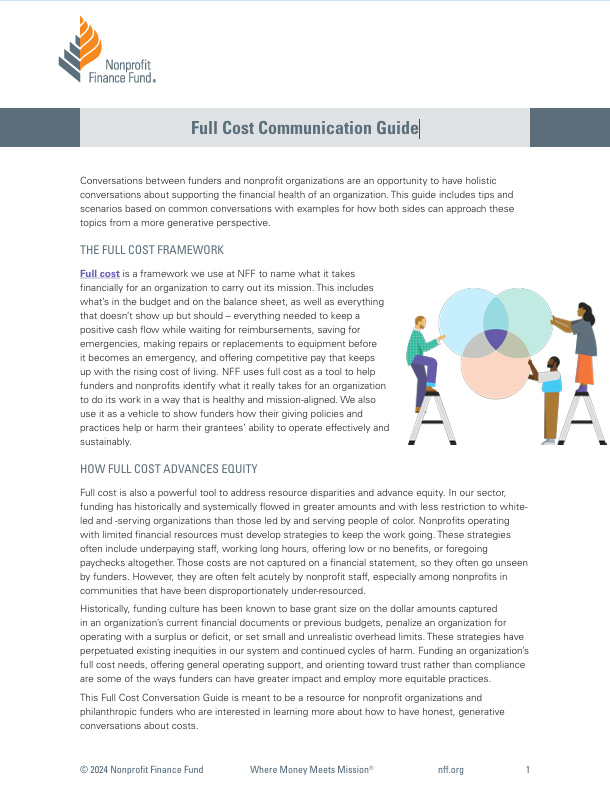Conversations between funders and nonprofit organizations are an opportunity to have holistic discussions about supporting the financial health of an organization. This guide includes tips and scenarios based on common conversations with examples for how both sides can approach these topics openly and productively.
Topics and scenarios include:
- How to discuss deficits to understand a nonprofit’s context and financial story.
- How to approach reduced funding with realistic expectations and flexibility.
- How to embrace surpluses and reserves as markers of financial health.
- How to negotiate funding terms to address challenges.

